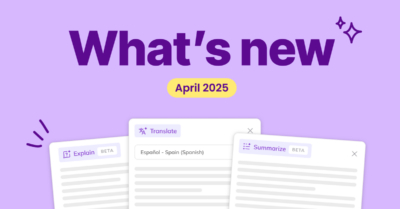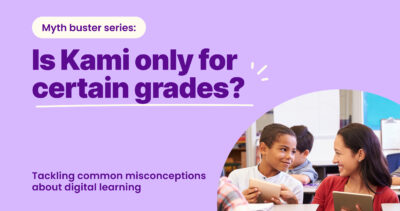Shirin Bradfield
Phonological awareness and phonemic awareness — boy, those are long words for something that we expect five-year-olds to be able to master! But don’t panic. The skills are actually a lot simpler than the names.
When you are teaching children in pre-K, kindergarten, and first grade, a lot of the focus will be on developing language skills. These skills are known as phonological awareness and phonemic awareness. Together they form a base for learning phonics skills, mastering the alphabetic principle (the concept that letters and letter patterns represent the sounds of spoken language), and reading instruction in later years.
What is phonological awareness?
Phonological awareness is the ability to recognize sound structures in spoken language.
The ability to understand and distinguish speech sounds starts at birth and continues through the early years. Most children have mastered basic phonological awareness by the end of first grade.
There are four levels of phonological awareness
Whole words – This is the most basic level and where learning starts. At this level, children can hear the sound of whole words within a sentence and they will be able to recognize rhymes and alliteration.
Syllables – This is the next level and comes when children begin distinguishing parts of the individual word. Syllables are large blocks of sound, often including vowel sounds. For instance, car has just one syllable. The word syllable has three syllables!
Onset-rime – At this level, children recognize two specific parts of a word – the onset and the rime. The onset is usually the first letter sound, eg the C in car, and the rime is the vowel and consonants that follow it, eg the AR in car. At this level, children can also recognize words that rhyme.
Phonemes – The most complex level is recognizing individual phonemes or letter sounds within each word.
What is phonemic awareness?
Phonemic awareness is one part of phonological awareness. The terms are often used interchangeably to mean the same thing but there is a difference between the two. If you think of phonological awareness as a cake, then phonemic awareness is one of the ingredients.
Phonological awareness focuses on whole words. Phonemic awareness is the ability to notice and manipulate the individual sounds in spoken words known as phenomes.
Did you know that there are 44 common phenomes, the smallest unit of sound, in the English language, even though there are only 26 letters in the alphabet? That’s because phenomes include both individual letter sounds and blended sounds like th. Phonemic awareness also brings the ability to recognize how changing the individual sounds can change the whole word by deleting or adding sounds.
Why is developing phonological awareness skills so important?
Phonological awareness and phonemic awareness are super important because it is one of the strongest predictors of reading success for children. Phonological and phonemic awareness are precursors to phonics which is the ability to match letter sounds to written letters and use those sounds to decode new words. Children who do well with phonemic awareness are more likely to become fluent readers.
On the other hand, learners who struggle with phonological awareness and phonemic awareness will likely also struggle to learn to implement phonics skills like decoding letters and sounds to learn new words which can hinder their reading development.
Recognizing difficulties with phonological or phonemic awareness
Because difficulty with phonological or phonemic awareness can be an early sign of struggling readers or children with dyslexia, it’s important to be aware of students in your class who are having difficulty:
- Thinking of simple rhyming words, such as thinking of a word that rhymes with cat
- Hearing different sounds in words
- Blending simple words
- Recognizing how many syllables there are in a word
How can you develop phonological and phonemic awareness skills in your classroom?
Communication is at the heart of human relationships. It helps us to tell each other how we are feeling, give instructions or important information and learn new concepts as we move through our education and daily life.
So developing good oral language and reading skills are essential and teachers play a vital role in phonological and phonemic awareness instruction.
For both phonemic awareness and phonological awareness, there are five types of manipulation skills that students need to grasp.
- Blending – combining words or blending sounds together
- Segmenting – breaking words or the sounds in words apart
- Addition – adding a word or sound to make a new one
- Deletion – eliminating a word or sound to make a new one
- Substitution – replacing a word or sound with a different one to make a new word. When it comes to phoneme substitution replacing the first sound is usually the easiest, and replacing middle sounds is the hardest.
Blending is the easiest skill to grasp and is usually where learning starts. At a whole word level, this takes the form of blending shorter words to make a longer word. For example, road and works blend to make roadworks. At the phoneme level, ie individual sound level, this is blending letter sounds together to make whole words. The last three skills are more complete and students might not be advanced in these skills until after first grade.
If students can master these skills, then teaching reading, will be much easier later on. One of the best ways to develop phonological and phonemic awareness skills in your classroom is to make sure you are speaking to students a lot and giving them a chance to use their own language skills as much as possible.
You can do this just through simple conversations and activities such as reading, singing, and games like I Spy. There are also specific activities such as Elkonin boxes that will help students practice segmenting words into syllables or letter sounds.
If you are looking for inspiration, we’ve got a great selection of phonological awareness activities and phonemic awareness activities that you can use in your classroom.
You may also like

Unlocking understanding: Kami’s latest updates designed for every learner

The state of SPED and ELL technology in 2025

